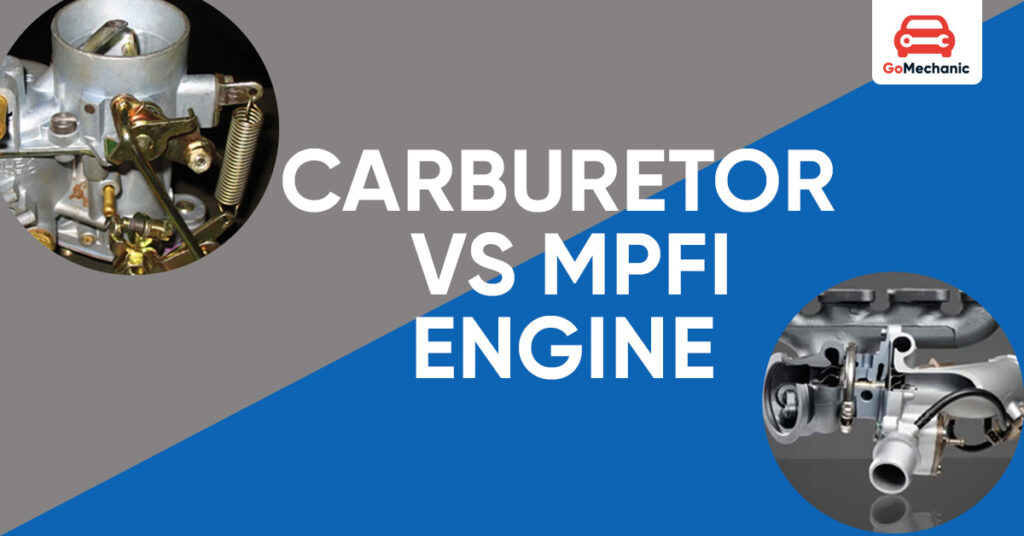You’ve probably heard mechanics or car lovers mention carburetor engines and MPFI engines, but what do they actually do? Which one is better? And why did one replace the other?
You have parked in the right place if you’ve ever wondered how these engines operate and what makes them unique. Let’s simplify it and eliminate any irrelevant information or difficult terminology. Just knowledge that is easy to understand and helps you make sense of everything.
Let’s keep it straightforward and clear—no complicated terms, no unnecessary details. Just everything you need to know about Carburetor Engine vs MPFI Engine in a way that actually makes sense.
What is a Carburetor Engine?
Before the 2000s, carburetor engines ruled the fuel system for cars and motorbikes for many years. It was chosen because it was straightforward, dependable, and simple to fix, making it a sensible option for both mechanics and manufacturers.
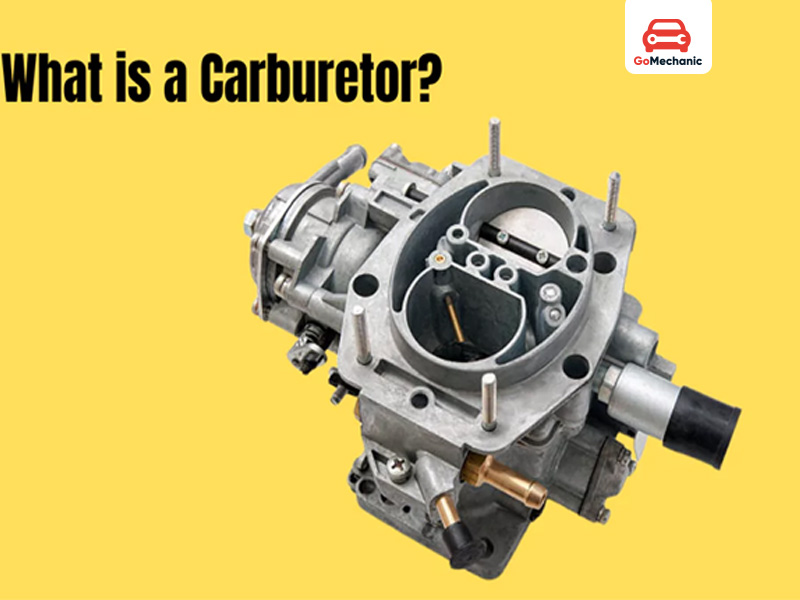
Before transferring the mixture to the engine to burn, it first mixes fuel and air in a mechanical chamber called the carburetor. Based on the driver’s accelerator input, the carburetor controls the amount of fuel that enters the engine using vacuum pressure and mechanical linkages.
The explanation above was complex and comprehensive; let’s now attempt to simplify it and make it easier for you to understand. Should we?
How Carburetor Engine Works? (In a Simple Way)
- It mixes fuel and air before sending it to the engine for combustion.
- The amount of fuel going in depends on mechanical parts and air pressure—not sensors or computers.
- More throttle (pressing the accelerator) pulls in more fuel, making the car go faster.
This mechanical fuel system was the standard for decades. Simple, reliable, and easy to fix.
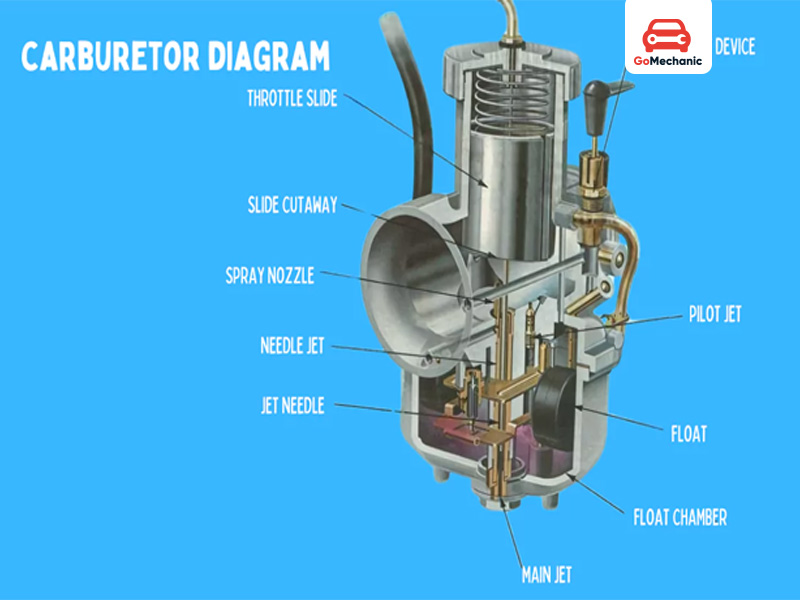
Pros of Carburetor Engines
- Simple Design: No computers, just mechanical parts that are easy to understand.
- Easy to Fix: Any local mechanic can repair it without special tools.
- Great for Older Cars & Bikes: Classic car lovers still prefer carburetors for their raw, natural performance.
Cons of Carburetor Engines
- Wastage of Fuel: It isn’t precise, so it burns more fuel than needed.
- Needs Regular Tuning: The fuel-air mixture has to be adjusted manually for different weather conditions and altitudes.
- Higher Pollution: Older technology means it releases more harmful gases into the air.
What is an MPFI Engine? (Multi-Point Fuel Injection Engine)
MPFI systems are more efficient, powerful, and ecologically friendly than traditional fuel distribution methods. Most current cars employ Multi-Point Fuel Injection (MPFI) as their fuel distribution system. MPFI engines employ electrical sensors and fuel injectors to provide precisely the correct amount of fuel for combustion, in contrast to carburetors, which use mechanical components to mix fuel and air.
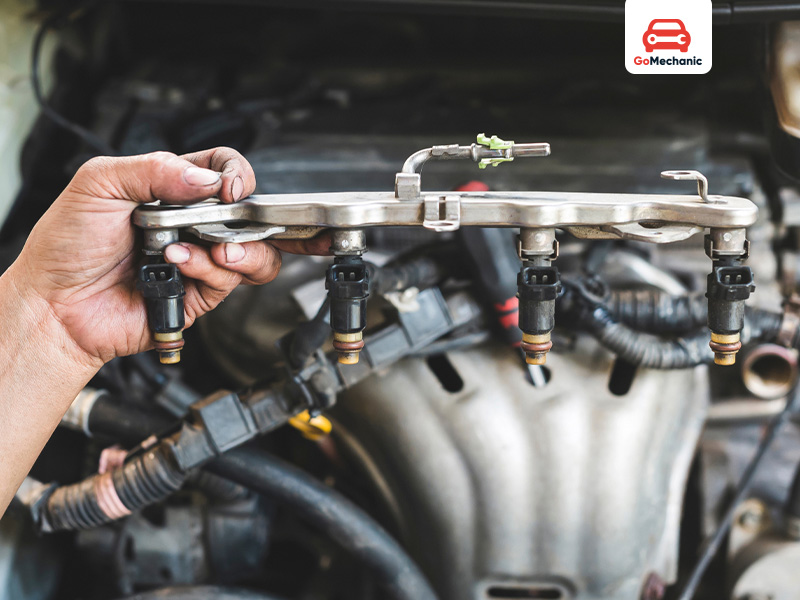
Today, almost every new car and bike comes equipped with an MPFI system because it meets strict emission norms, improves fuel economy, and provides a better driving experience. While older carburetor engines had their time, MPFI technology represents the future of fuel injection, making modern vehicles smarter, cleaner, and more efficient on the road.
How an MPFI Engine Works (In a Simple Way)
- Fuel Pump Sends Fuel – Fuel is pumped from the fuel tank to the engine.
- Sensors Collect Data – Sensors monitor engine speed, temperature, and air intake.
- ECU Decides Fuel Supply – The Electronic Control Unit (ECU) calculates how much fuel is needed.
- Injectors Spray Fuel – Instead of mixing in one place (like a carburetor), fuel is injected directly into each cylinder’s intake manifold.
- Fuel and Air Mix – The injected fuel mixes with incoming air for proper combustion.
- Ignition & Power Generation – The spark plug ignites the mixture, producing power to move the car.
- Continuous Adjustments – The ECU constantly fine-tunes fuel injection, improving mileage, performance, and emissions.
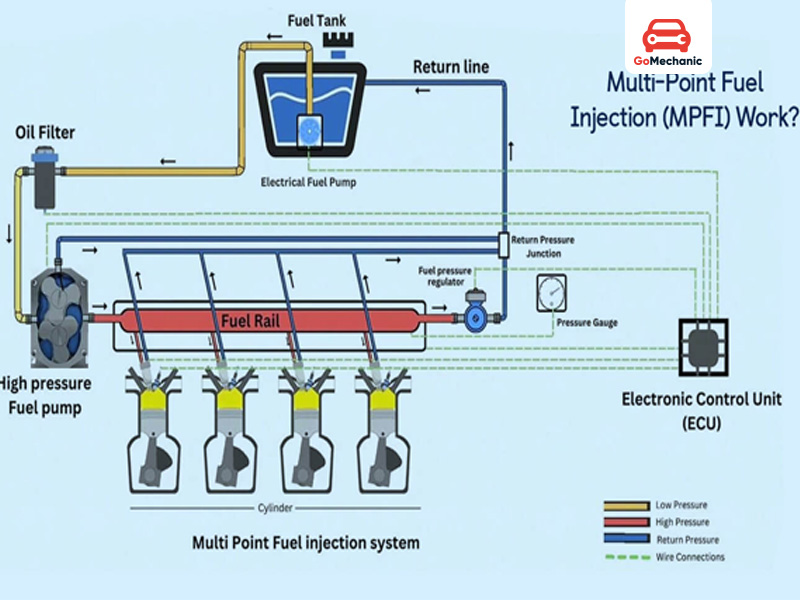
Pros of MPFI Engines
- Better Mileage: It sends only the required amount of fuel, preventing wastage.
- More Power & Smoother Driving: Fuel is burned efficiently, giving better acceleration and performance.
- Less Pollution: Controlled fuel delivery means fewer harmful emissions.
- No Need for Manual Adjustments: Sensors do all the work, unlike carburetors which need manual tuning.
Cons of MPFI Engines
- Expensive to Repair: More sensors and electronic components mean higher maintenance costs.
- Difficult to Fix at Home: Unlike carburetors, MPFI engines require specialized tools and trained mechanics.
- Not DIY-Friendly: A carburetor can be adjusted with basic tools, but MPFI systems need computer diagnostics.
PFI Engine vs. Carburetor Engine: Difference
Now that we know how both systems work, let’s compare them:
| Feature | Carburetor Engine | MPFI Engine |
| How Fuel is Delivered | Uses air pressure to mix fuel and air mechanically | Uses sensors and injectors for precise fuel supply |
| Fuel Efficiency | Low (burns more fuel than needed) | High (sends only the required fuel) |
| Power & Performance | Less power, slower response | Better acceleration, smoother driving |
| Maintenance & Repairs | Easy to fix, cheaper to maintain | Expensive to repair, requires trained mechanics |
| Environmental Impact | High emissions, more pollution | Lower emissions, meet modern pollution norms |
| Tuning & Adjustments | Needs regular manual tuning | Adjusts automatically based on conditions |
| Technology Used | Simple mechanical parts | Electronic sensors and computer controls |
Summary: MPFI engines are more efficient, powerful, and eco-friendly, but carburetor engines are simpler and easier to fix.
Why Did MPFI Replace Carburetors?
Replacement of carburetors and the addition of MPFI engines weren’t just necessary for technical development. carburetors to handle couldn’t handle the need for increased horsepower, stricter emission regulations, and growing fuel prices.
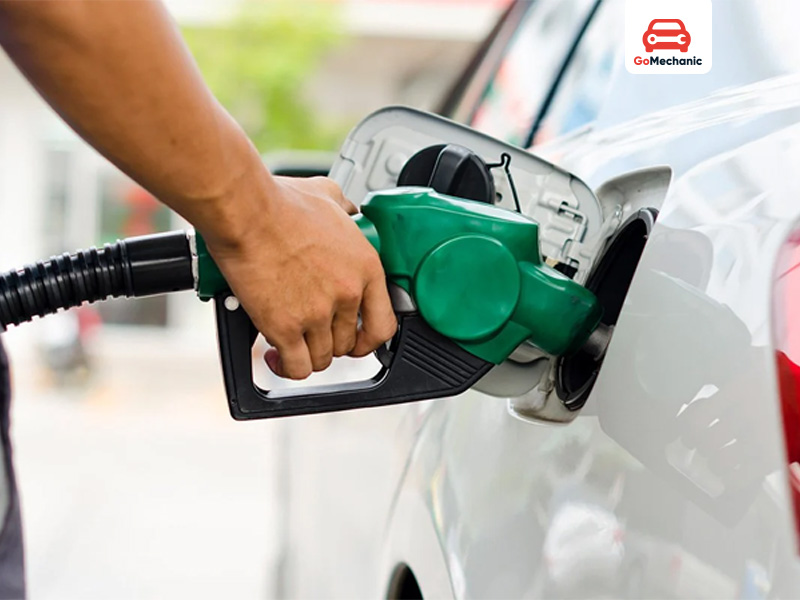
-
Less Pollution, More Efficiency
Carburetor engines wasted fuel and released more harmful emissions. MPFI engines inject just the right amount of fuel, making combustion cleaner and more efficient—helping meet stricter pollution laws.
-
Better Mileage, Lower Fuel Costs
Carburetors weren’t precise, so they often burned more fuel than needed. MPFI systems control fuel flow electronically, improving mileage and saving money on petrol in the long run.
-
Smoother Performance & More Power
MPFI engines deliver fuel directly into each cylinder, ensuring quicker acceleration, better throttle response, and consistent power delivery—something carburetors couldn’t do as efficiently.
-
Low Maintenance & Automatic Adjustments
With carburetors, manual tuning was a must to adjust fuel flow based on weather, altitude, and driving conditions. MPFI engines do this automatically, reducing the need for frequent maintenance.
-
No More Cold Start Issues
Struggling to start a car in winter? That was a common problem with carburetors. MPFI engines adjust fuel delivery based on temperature, ensuring quick and smooth starts, even on freezing mornings.
With turbocharged engines, hybrids, and advanced fuel-saving tech, MPFI became the only way forward. Carburetors just couldn’t keep up with the efficiency and precision required for modern vehicles.
This One is for you – The Engine Cooling System: The Silent Workhorse of Your Car
Which One is Right for You?
Depending on your needs, you can choose between an MPFI engine and a carburetor engine. Even though MPFI is now the norm, carburetors are still useful for some hobbyists and applications.
-
Love classic cars or motorcycles?
Carburetor engines offer that old-school, mechanical feel and are easier to tweak manually. Many vintage car lovers prefer them for their raw, hands-on driving experience.
-
Want better mileage, fewer emissions, and smooth performance?
MPFI engines offer a smoother, more responsive drive, use less gasoline, and emit less pollutants. MPFI is the best option if you’re worried about gasoline prices and their effects on the environment.
-
Prefer low-maintenance and easy repairs?
Carburetor engines are simpler to fix and don’t require advanced diagnostics. If you enjoy working on your own vehicle or want something easy to repair in remote areas, carburetors make sense.
-
Looking for hassle-free, modern driving?
MPFI engines adjust automatically to different conditions, require less frequent tuning, and are more reliable for everyday driving.
Quick Recommendation Table for You
| If You Want… | Go For… |
| A low-maintenance, fuel-efficient car | MPFI Engine |
| A simple, easy-to-fix engine | Carburetor Engine |
| Better power, acceleration, and smooth driving | MPFI Engine |
| An engine for off-road or rural areas | Carburetor Engine |
| Lower emissions and eco-friendliness | MPFI Engine |
| A DIY-friendly engine that doesn’t need computerized diagnostics | Carburetor Engine |
| A long-term reliable engine with automatic adjustments | MPFI Engine |
You should not skip this – 4-Cylinder Engine vs 3-Cylinder Engine- Which One Is Suitable For You?
Safety Features & Reliability: How Do They Compare?
As long as they are maintained, MPFI and carburetor engines can both last for many years. But when it comes to dependability and upkeep, they have rather distinct personalities.
Carburetor engines:
These are like old-school machines—simple, tough, and easy to repair. No complicated electronics, no high-tech sensors—just mechanical parts doing their job. This makes them ideal for off-road vehicles, motorcycles, and vintage cars where efficiency is less important than repairability.
The drawback is that they require ongoing adjustment in order to function properly. Does the weather change? Changes in altitude? Wear on engines? To keep things functioning properly, you will need to adjust the carburetor periodically. Ignoring them might result in fuel waste, power outages, or even stalling at the worst possible moment.
MPFI engines:
MPFI engines, on the other hand, are self-sufficient. MPFI engines, on the other hand, are self-sufficient. The Electronic Control Unit, or ECU, self-corrects everything, so they don’t require continuous tuning. Without putting in any effort on your part, that translates into increased mileage, smoother power, and lower emissions.
However, maintenance can be challenging because of their abundance of sensors and electronics. You will require a skilled mechanic and specialized equipment in the event of an issue, which might be costly.
Which one is safer?
In the battle between Carburetor Engine vs MPFI Engine, MPFI engines take the lead here. The precise fuel injection means smoother power, fewer misfires, and less risk of engine knocking. Carburetors, while dependable, aren’t as precise, so they can sometimes cause rough engine performance, inconsistent power, or inefficient fuel burning.
Maintenance Cost Comparison: Carburetor Engine vs MPFI Engine
| Maintenance Task | Carburetor Engine Cost (₹) | MPFI Engine Cost (₹) |
| Regular Tuning/Adjustment | ₹500 – ₹1,500 (Frequent) | Not required (Automatic adjustment) |
| Fuel Injector/Carburetor Replacement | ₹5,000 – ₹10,000 | ₹7,000 – ₹20,000 |
| Sensor Replacement | N/A (No sensors) | ₹3,000 – ₹10,000 (Varies by sensor) |
| Air Filter Cleaning/Replacement | ₹300 – ₹700 | ₹500 – ₹1,000 |
| Spark Plug Replacement | ₹500 – ₹1,500 | ₹1,000 – ₹3,000 |
| Total Annual Maintenance | ₹3,000 – ₹6,000 | ₹6,000 – ₹15,000 |
Final Verdict: Carburetor Engine vs MPFI Engine – Who Wins?
MPFI engines are the future—they offer better performance, lower emissions, and improved fuel efficiency. That’s why every new car today uses MPFI technology.
On the other hand, Carburetors are great for other cars and motorcycles, where simplicity and easy repairs matter more than fuel efficiency or emissions.
So, the big question: Which one do you prefer—the simplicity of a carburetor or the efficiency of an MPFI engine?
You might find this interesting – How Does a Car Engine Work
FAQ: Carburetor Engine vs MPFI Engine
Q1: Why did MPFI replace carburetors?
MPFI is more fuel-efficient, reduces emissions, and provides smoother performance. Carburetors wasted fuel and needed frequent tuning.
Q2: Can I convert a carburetor engine to MPFI?
Yes, but it’s expensive (₹50,000+). It requires new injectors, sensors, and an ECU. Buying an MPFI car is a better option.
Q3: Which engine is better for rural/off-road areas?
Carburetor engines are better—they’re simpler, easier to repair, and don’t rely on electronic sensors like MPFI.
Q4: Is MPFI more expensive to maintain?
Yes. MPFI repairs cost more due to sensors and injectors, but they need less frequent maintenance than carburetors.

